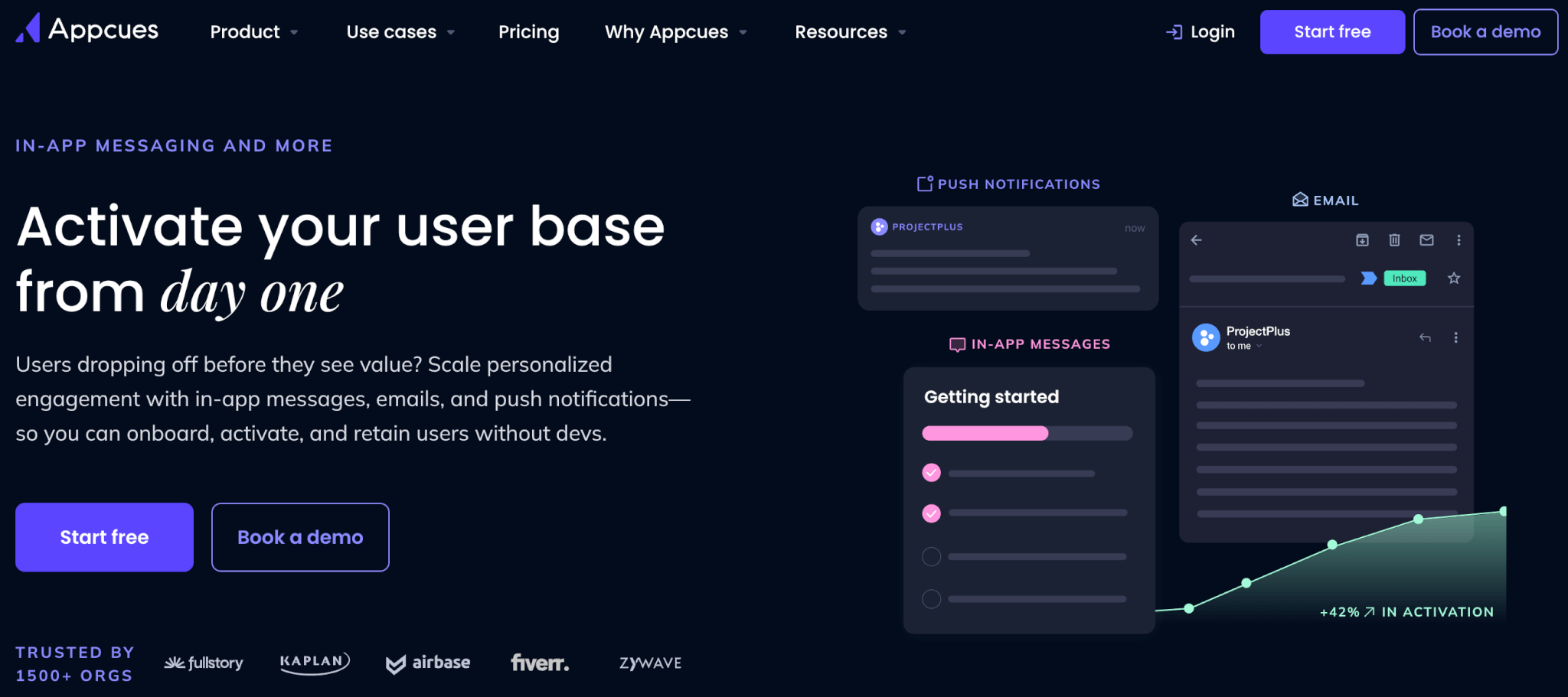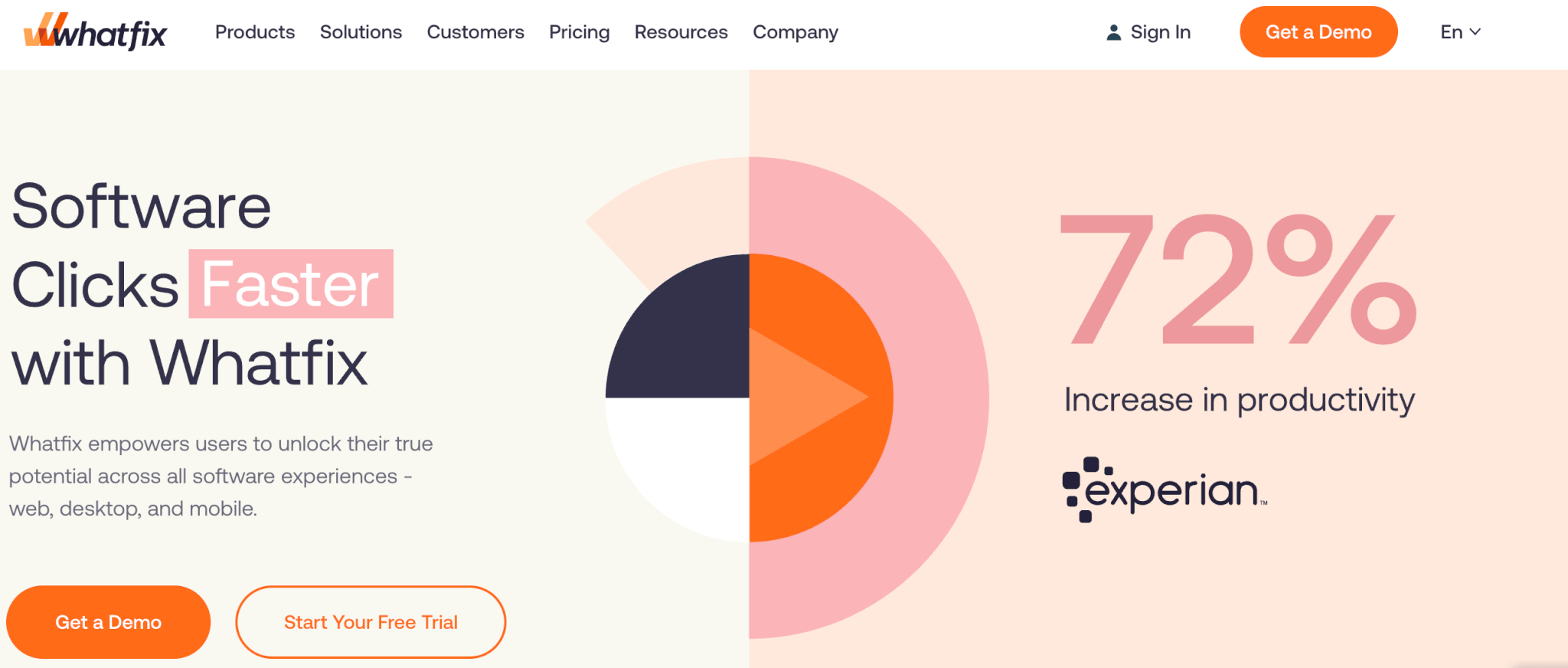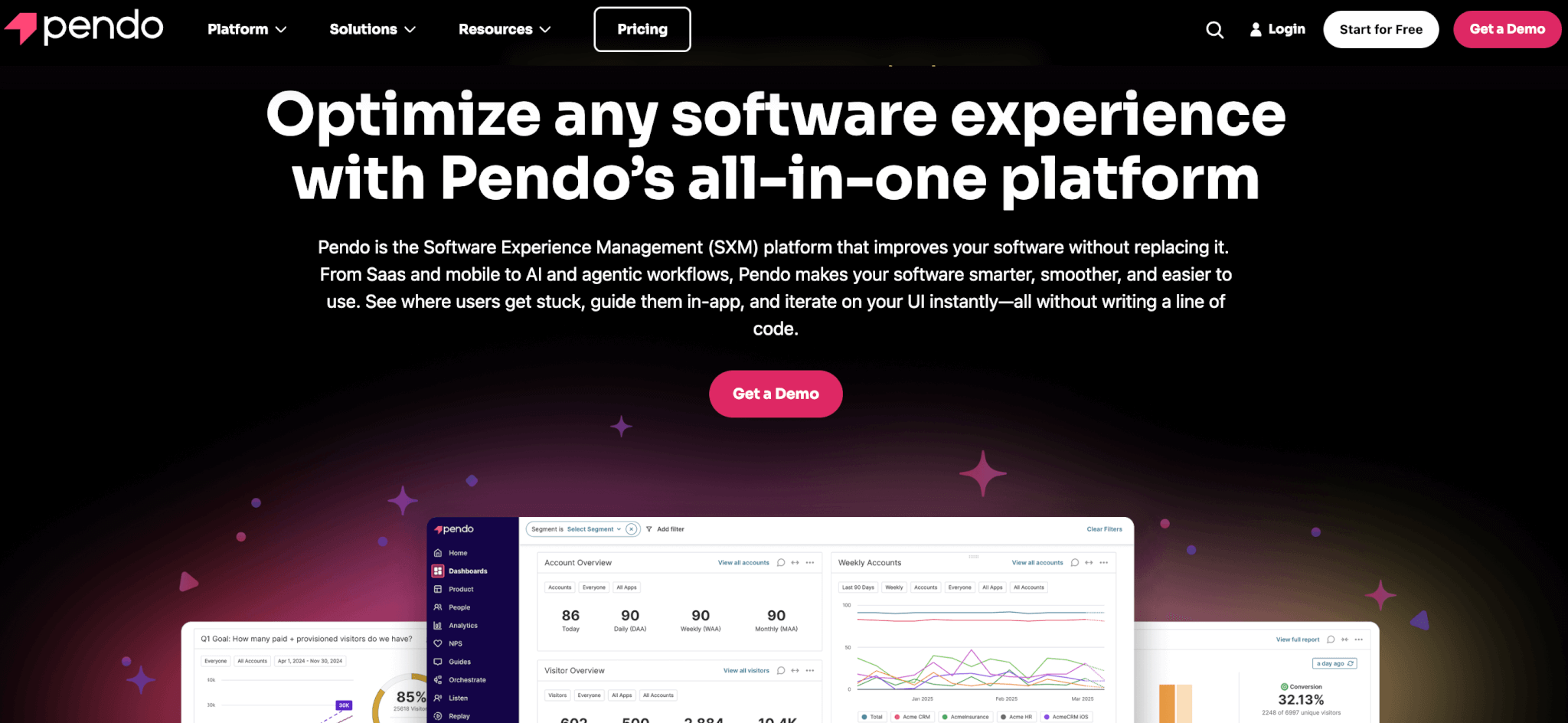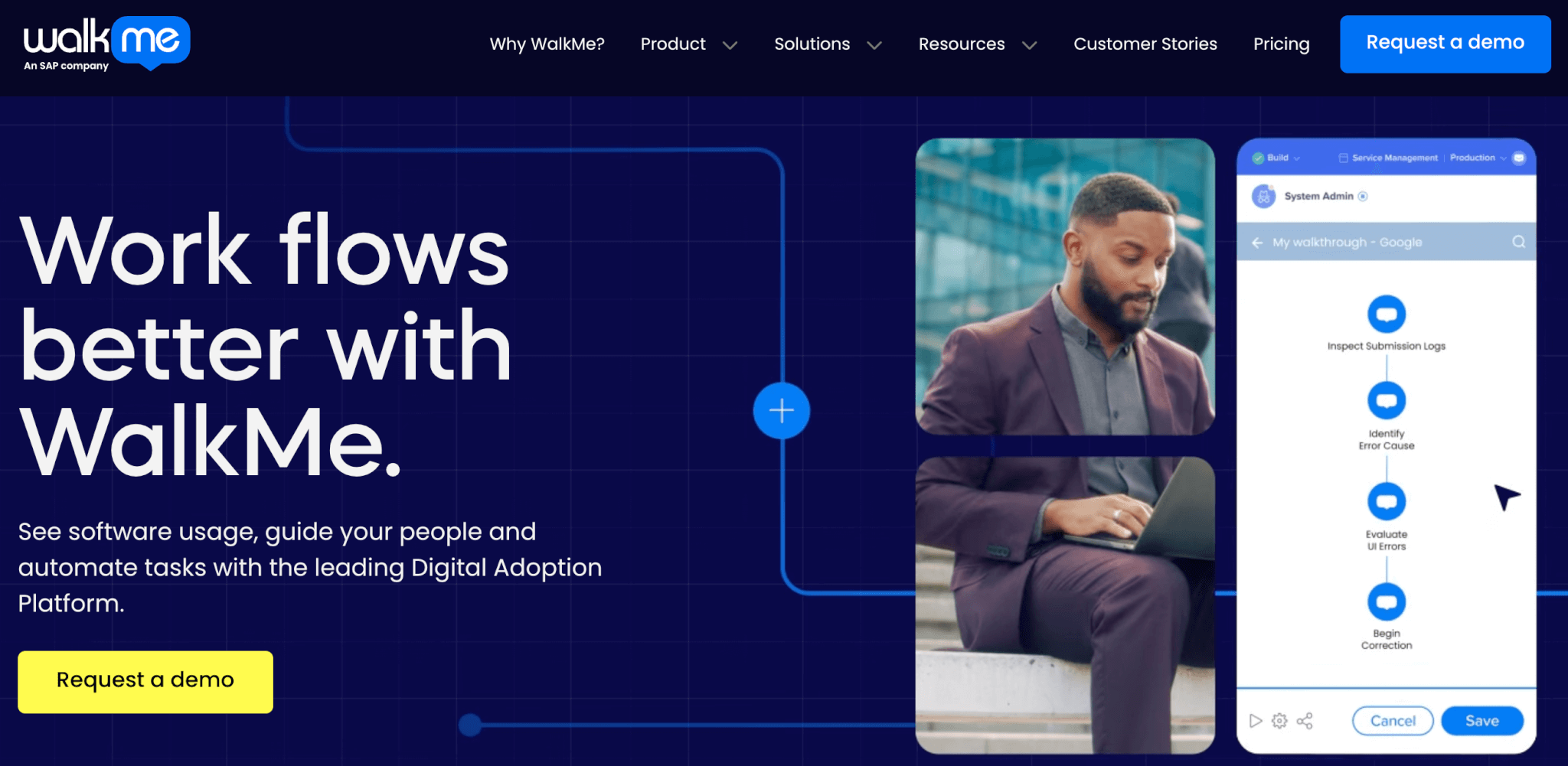Table of Contents
With so many tools on the market, finding the right product adoption platform can be overwhelming. To make your search easier, we’ve picked five of the top solutions in 2025, evaluated based on features, usability, and user feedback.
In this blog post, we’ll also break down:
What product adoption software is, and why your business needs one
Whether you’re trying to build a better onboarding experience or doubling down your product-led growth strategy, this guide will help you make a more confident choice.
Here’s a quick overview of the platforms before we dive into more details:
What is product adoption software?
Product adoption software, also known as a digital adoption platform, is a valuable onboarding tool for SaaS companies that want to help new and existing users learn how to use their products or new features.
The goal of adoption platforms is to drive user adoption and to do so faster than it would happen without an automated process. They are primarily focused on user activation—the “aha moment” when a user realizes your product’s value.
Here’s what product adoption tools offer to ensure a smooth onboarding process:
Product adoption and customer training platforms: Are they the same?
It’s important to distinguish between product adoption and customer training platforms. While product adoption tools focus on guiding users through onboarding flows and helping them reach their first ‘aha moment’ within the app, their scope is often limited to in-app cues and early-stage interactions.
On the other hand, customer training platforms offer a more holistic approach, providing structured and ongoing customer education experiences that support users throughout the entire customer lifecycle.
The two are not mutually exclusive; in fact, they’re often most powerful when used together, and we’ve seen many of our customers build a customer education program with LearnWorlds and use product adoption tools to onboard users inside their SaaS apps.
Here’s a side-by-side comparison:
If your goal is to establish brand authority and build strong relationships with your customers, then you need to think beyond onboarding. An LMS for customer training like LearnWorlds helps you deliver scalable, branded learning experiences for long-term customer success and loyalty.
Start building your customer education academy today.
Why is product adoption software important for business success?
A product adoption platform is an essential tool that is mainly used during the two last product adoption stages—trial and adoption—and during onboarding. It improves the customer experience for free trial users, helping to convert them into paying customers, and helps new users learn your product.
Speed up user onboarding
Product adoption software helps users overcome the initial learning curve and get started faster with walkthroughs, checklists, and in-app tips. This is all the more true for late adopters and laggards since these two groups of the product adoption curve are not so tech-savvy and struggle with software adoption. If they form a big part of your customer base, prioritize investing in a product adoption platform.
Improved retention and lower churn
Effective user onboarding must be part of your customer retention strategy. In-app support improves customer satisfaction and prevents early churn as it improves the customer experience and helps users discover valuable product features.
Data-driven user insights
Product adoption software tools monitor user behavior in real time and offer detailed analytics. They track how users interact with your product, where they drop off, and what features they use most so you can make tweaks and product improvements moving forward.
Customized user experiences
A product adoption platform enables you to tailor in-app messaging and content to different user segments, roles, or behaviors. By delivering more relevant guidance, you can increase customer satisfaction and adoption.
Reduced support load
In-app messaging and proactive tips help users solve problems on their own without reaching out to support. This frees up customer support agents for more complex issues, also lowering the costs as you can double down your customer support level without increasing the human resources involved.
Increased product-led growth
What better way to grow your business than leaning on your product’s value? Help users discover and use core product features first, and be sure they will explore more advanced functionalities and upgrade their plans later. Not only that—they will also tell their friends about it. This is product-led growth, and it’s one of the best things that can happen to your business.
Faster time-to-value
Not all users have the technical knowledge to set up software platforms—let alone reach their first milestone. Help new users reach “aha” moments and realize the product’s value faster, shortening the onboarding lifecycle and improving user activation rates.
Scalable onboarding and training
Product adoption software eliminates the need for manual onboarding with consistent, repeatable flows. It allows you to scale your user adoption strategy, and is especially valuable for fast-growing products.
10 key features of product adoption software
SaaS user engagement and onboarding are common headaches in the industry, but the right tool can make all the difference. Let’s see the 10 must-have features to look for as you choose your product adoption platform.
Top 5 product adoption software in 2025
Now that we’ve covered what to look for in a product adoption tool, let’s dive into the top platforms worth considering in 2025.
Appcues

Appcues is a product adoption platform built to boost user activation and engagement. It lets you reach users across multiple channels with in-app messages, emails, and push notifications while tracking their actions to trigger the right messages at the right time. It also allows you to segment users, automate workflows, and personalize the experience without needing dev help.
In terms of analytics, Appcues gives you insights into message performance, engagement trends, and key metrics like retention and activation. It also supports A/B testing and integrates with popular CRMs to keep everything in sync.
Key features
Pros
- Easy to use, even for non-technical teams
- Boosts user engagement with effective flows
- Great customer support
- Integrates well with other tools
Cons
- Occasional bugs or glitches
- Limited customization in some features
- Can get expensive at scale
- Steeper learning curve for advanced features
Pricing
Appcues offers a free trial. Pricing plans start from $300/mo, paid annually.
Whatfix

Whatfix is a digital adoption platform that helps users through in-app guidance, a built-in resource center, and contextual messaging across web, desktop, and mobile. It gives you detailed engagement and usage data, like where users drop off in flows or what they search for most in Self Help.
It also taps into AI to assist with things like content creation and task automation. One standout concept is “Userization”—creating flexible, personalized experiences that adapt to each user’s behavior. Whatfix is especially popular with companies that rely on complex tools and need scalable internal training solutions.
Key features
Pros
- Highly customizable and adaptable
- No-code editor
- Converts guides into multiple formats (PDF, video, slideshows)
- Integrations with enterprise platforms (Salesforce, Workday, etc.)
Cons
- Steeper learning curve for setup and full adoption
- Clunky, outdated UI
- Expensive for smaller teams or startups
- Analytics could be more intuitive or user-friendly
Pricing
Available upon request.
Pendo

Pendo is a Software Experience Management (SXM) platform designed to make your product smarter, smoother, and easier to use. It tracks user behavior and usage trends and uses AI to summarize feedback and surface key insights. You can run A/B tests, set up behavior-based segments and automations, and coordinate in-app and email messages to keep everything aligned.
Pendo also offers AI-generated guides and steps and lets you embed them directly into your UI, so users get help without ever leaving the flow. It’s a good option for teams looking to combine analytics, feedback, and guidance in one platform.
Key features
Pros
- Strong product analytics
- Built-in feedback + NPS tools
- In-app guides for onboarding
- Great for product-led growth teams
Cons
- Can be expensive
- Setup can be complex
- Limited design customization
- Some features locked behind higher tiers
Pricing
Available upon request.
WalkMe

WalkMe is a digital adoption solution built for organizations working with complex software. It helps guide employees through tools and processes with personalized, automated experiences right at the point of friction across web, desktop, and mobile. A standout feature is WalkMe Workstation, an employee hub that enables users to streamline workflows, manage tasks, and access all their apps from a single interface.
Powered by AI, its DeepUI technology detects changes in your apps and automatically updates guidance, so workflows stay smooth and uninterrupted. WalkMe also offers deep adoption analytics, tracking usage trends, drop-off points, and common errors, and it provides AI-based suggestions to fix broken processes. Its built-in chat interface makes it easy for employees to find info and complete tasks faster.
Key features
Pros
- Intuitive UI
- Robust analytics
- Supports multiple automations
- Great customer support
Cons
- Complex set up
- Steep learning curve
- Highly priced for small companies
- Impacts app performance when running
Pricing
Available upon request.
Userpilot

Userpilot is a leading in-app guidance tool that helps users navigate your product with tools like product tours, checklists, tooltips, banners, and a built-in resource center. It offers detailed user segmentation, so you can tailor experiences based on behavior or lifecycle stage.
On the analytics side, it includes event autocapture, usage trends, funnel analysis, and feature retention tracking. You’ll also find built-in tools for collecting feedback, like NPS, CSAT, CES, and custom in-app surveys, plus the ability to trigger them based on user actions.
Key features
Pros
- User-friendly
- Effective workflows
- Easy to implement
- Attentive to user feedback
Cons
- Learning curve for advanced features
- Lacks deep analytics
- Event listeners are not always accurate
- Clunky UI
Pricing
Userpilot offers a free trial. Pricing plans start from $299/mo paid monthly.
How to choose the right product adoption software
How do you choose the best digital adoption platform to improve user adoption? Choosing the right product adoption software isn’t just about picking the most popular tool—it’s about finding the one that fits your product, your users, and your goals. Here’s a step-by-step guide to help you make a confident, informed decision.
1. Understand your business goals
Before anything else, you need to be clear about your business goals. Important questions to ask:
2. Identify your target users
When choosing your adoption platform, you need to develop user personas and segment users. This will help you find the tool that best matches their needs as well. Things you need to determine:
3. Evaluate core features
Make sure the product adoption tool has the features we discussed before—the ones that are relevant to you, that is. If you’re unsure, book a demo with a sales representative, and they should be able to guide you toward a suitable feature set.
4. Compare pricing models
Another important consideration is pricing, which should align with your budget. Check the vendor’s pricing model to see if they charge per user, feature, or usage volume.
In the table below, we’ve broken down the pros and cons of each model for you:
Many user onboarding tools offer hybrid pricing (eg, per user and by feature tier), so it’s important to map pricing to your product’s user behavior and growth plans.
5. Test with a trial or demo
Schedule a demo or, ideally, leverage a free trial or freemium plan to see how the adoption platform fits your workflows. Involve both product and customer success teams in the evaluation process.
Beyond tools: Emerging trends in product adoption strategies
Product adoption isn’t just about onboarding anymore—it’s evolving into a broader, more dynamic strategy. Let’s take a look at some of the key trends shaping how teams drive long-term customer engagement and value, as viewed by Eric Sornoso, co-founder of Mealfan.
“Certainly, product adoption strategies have changed fast in the last few years, and several key trends are already generating momentum.
The most salient is the shift to product-led growth (PLG), where customers increasingly loop in and come to understand the value of a product through freemium or trialed use or through self-service onboarding instead of having the value of the product shown through the eyes of its primary use. This shortens the time to value and increases retention considerably.
Another new practice is behavioral onboarding through product analytics and AI. Through tools like Pendo, Appcues, and WalkMe, teams can provide personalized in-app guidance based on real-time user behavior to identify moments of friction and missing feature adoption. Data-driven, adaptive support ensures that users only get relevant assistance when needed.
However, the trendier one could classify library-adoption strategy as favoring community education. Users then interact with other users, mostly in forums, user groups, and on-site training sessions. This provides legitimacy to peers and thereby speeds up learning and trust.
The best strategies are user-led, iterative, and completely built with customer feedback loops.
Adoption now is about maintaining a steady showcase of value in the customer lifecycle rather than just delivering onboarding.”
Eric Sornoso, Co-founder, Mealfan
Final thoughts
User onboarding is a quintessential part of your customer retention strategy—it’s a great starting point in engaging your new users. The tools we’ve shared are all excellent choices for guiding users through those crucial first steps and helping them find value quickly.
As we mentioned before, if you want to go beyond the product adoption process and build long-term engagement, customer education should be on your agenda. That’s where LearnWorlds comes in.
With LearnWorlds, you can build a branded customer academy and deliver scalable customer training programs. Through engaging experiences like online courses, webinars, and certifications, you’ll not only drive product adoption but also deepen customer loyalty.

Androniki Koumadoraki
Androniki is a Content Writer at LearnWorlds sharing Instructional Design and marketing tips. With solid experience in B2B writing and technical translation, she is passionate about learning and spreading knowledge. She is also an aspiring yogi, a book nerd, and a talented transponster.
FAQ
Everything you have ever wondered, but were too afraid to ask...

